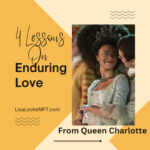I’ve always been fascinated by the magic of movies! You know how life can sometimes feel like a roller-coaster with all its stress and uncertainty? Then you go to a movie or watch one of your favorites on TV and suddenly you’re whisked away to these incredible worlds where anything is possible. Like, remember those breathtaking scenes in Crouching Tiger, Hidden Dragon (2000), or the old-timey charm of Casablanca (1943)? They’re like a mini-vacation for your mind, giving you a break from the daily grind. It’s pretty cool when you think about it!
But movies aren’t just about escaping reality; they can be like little treasure troves of wisdom. You know how we always talk about learning from experiences? Well, some movies can be like crash courses in life lessons. In my book Blockbuster Love: Lessons from the Movies on How to Create Lasting Love, I explore how the themes and lessons found in film can enrich our relationships and enhance our well-being. Whether it’s picking up relationship tips (do’s and don’ts) from a rom-com or feeling inspired by characters overcoming obstacles, there’s always something to take away. Movies can shift our perspectives and help us find meaning and inspiration in our own lives.
And to add to this—movies are emotional powerhouses! They can make you laugh, cry, and everything in between. When we connect with those characters on screen, it’s like we’re tapping into our feelings, which is pretty therapeutic if you ask me. Having a good cry during a sad movie is like hitting the emotional reset button. Our tears release pain and stress and help regulate our nervous system. That’s why we can feel so much better after a good cry.
When we feel empathetic during a movie, it’s like we’re practicing for real-life situations. We become better at understanding how others might feel or what they might be going through. And that’s gold for relationships. I mean, think about it—when you can really get where others are coming from, it’s unifying— like you’re speaking the same language.
But here’s the real kicker: movies have this amazing ability to shine a light on mental health issues without making it feel heavy or scary. Seeing characters dealing with their own struggles is like a reminder that we’re not alone in this journey, and it’s okay to ask for help when we need it.
Movies don’t just make us feel good; they make us want to do good too. Ever watched a film where the underdog comes out on top, and you’re suddenly feeling all inspired? Yeah, that’s the magic of movies pushing us to be our best selves. And when we watch great movies with friends, we not only feel all warm and fuzzy inside but we build bonds and community, and that sense of connection is priceless.
From providing an escape from day-to-day stress to encouraging empathy, inspiring hope, or having a good cry, movies have the power to uplift and help with healing in surprisingly creative ways. So the next time you’re feeling overwhelmed or in need of a pick-me-up, consider watching your favorite film—it just might be the magic your heart and mind need.





